Here’s a sneak peak of a watercolour project I’m working on. More details to follow in February 2022. New Year is just around the corner!
(post by Tanya)

Here’s a sneak peak of a watercolour project I’m working on. More details to follow in February 2022. New Year is just around the corner!
(post by Tanya)

After a scenic trip on the Great Western, as soon as we landed in Torquay installation of the Agatha Christie exhibition began. I hear the show is popular with visitors, which gives me a warm glow.
Agatha Christie: Destination Unknown
Sat 11 Sept 2021 to Sun 28 Nov 2021
Torre Abbey
The King's Drive
Torquay TQ2 5JE
www.torre-abbey.org.uk/whats-on/agatha-christie-destination-unknown/
(post by Tanya)

Only a few days to go until we install the new Agatha show. Curator Alice Graham and I have been working on it intensively since spring, so it’s great to see the work coming to fruition.
The show takes a fresh angle on her life and centres around the work she did with her husband: archaeologist Max Mallowan. Many times I’ve laughed aloud while designing - it’s her wonderful tales and quotes, you see... it seems Agatha is world famous for good reason! The star objects are original transcripts of her poetry, which are a revelation.
In a lovely full circle moment, I was already an admirer of hubby Mallowan. Since childhood I’ve visited the British Museum to gaze at the Assyrian reliefs he excavated. This led me to studying archaeology at UCL, where he was a professor in earlier days.
Right! Must be off to pack my tape measure, masking tape and toothbrush.
Agatha Christie: Destination Unknown
Sat 11 Sept 2021 to Sun 28 Nov 2021
Torre Abbey
The King's Drive
Torquay TQ2 5JE
www.torre-abbey.org.uk/whats-on/agatha-christie-destination-unknown/
(post by Tanya)


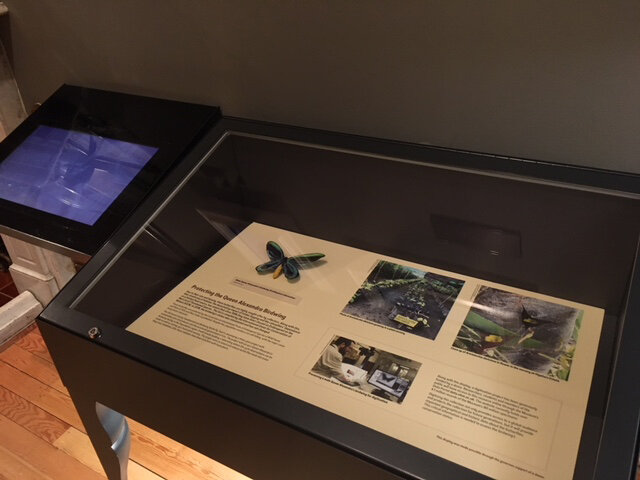
For the last two years, I designed the exhibition ‘Sensational Butterflies’ for the Natural History Museum. (See link here). This year, the front lawn where they usually exhibit the live butterfly show was closed for refurbishment which meant, naturally, no show. In its place I worked on this much smaller butterfly project for them. Ironically, it’s a display about the world’s largest butterfly – the Queen Alexandra Birdwing.
Fascinating fact: the adult females have a wingspan reaching up to 28 centimetres which is about the length of a sheet of A4. Imagine that flapping around.
The two display cases are on show at the wonderful Tring branch of the Natural History Museum. Link below.
https://www.nhm.ac.uk/visit/tring.html
(post by Tanya)
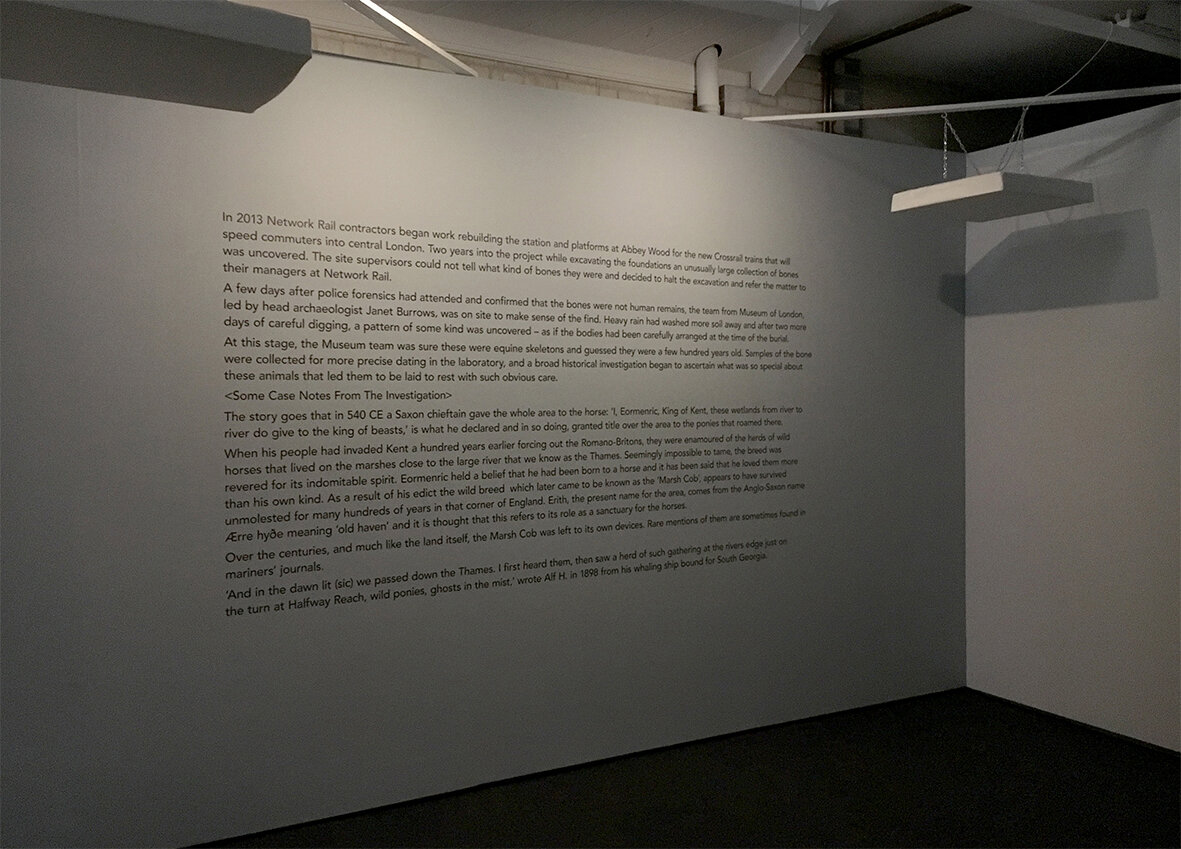
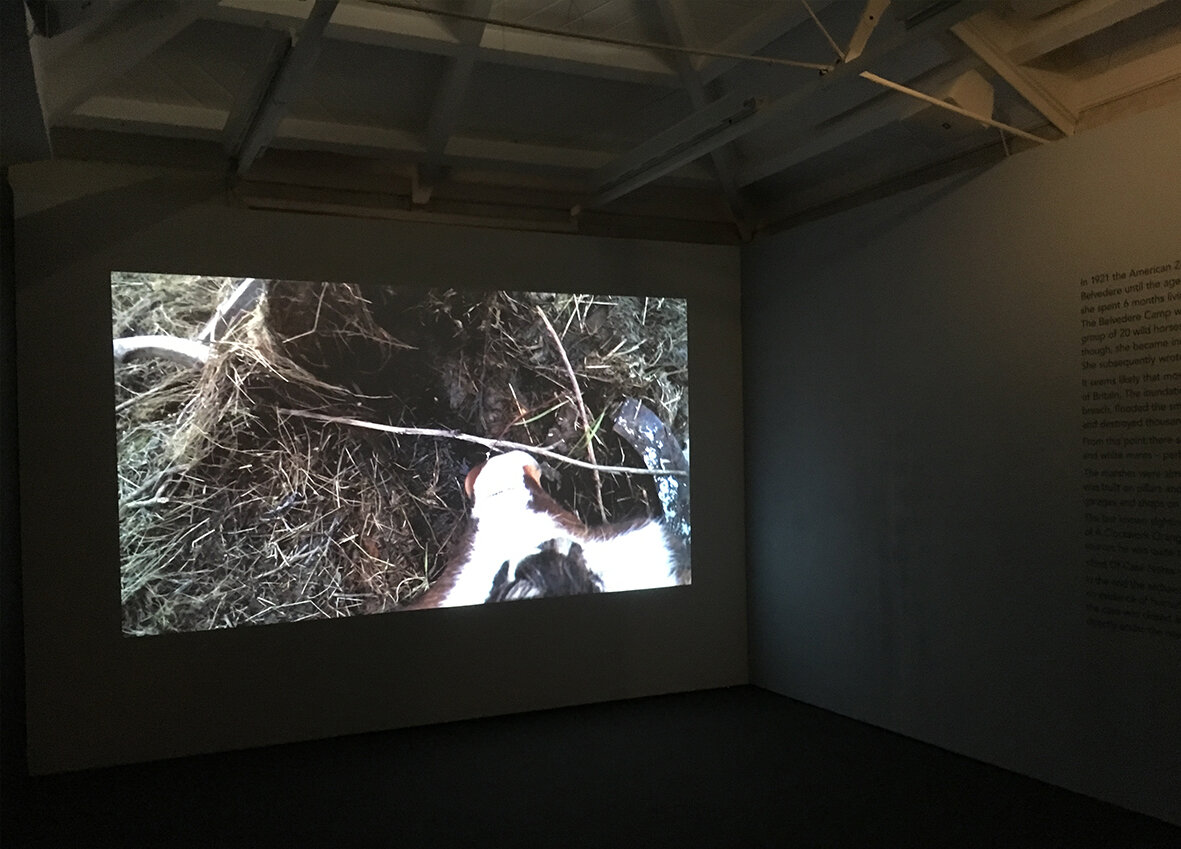

Over the last couple of years I’ve been working with the artist Donald Harding. In 2018 I worked with him to create an exhibition for his piece ‘The Marshes’ and more recently on his website. Donald is a bit of a polymath and describes himself as working in ‘video, text and sound’. Click the link below for more information.
‘The Marshes’ is a very moving piece centred around the horses on the Thamesmead Estate. The work really stayed with me as it uses a unique and haunting mix of fact and fiction. It showed most recently at the South Kiosk Gallery in Peckham. Keep your eye open for upcoming shows.
https://www.donaldharding.com/the-marshes
(post by Tanya)
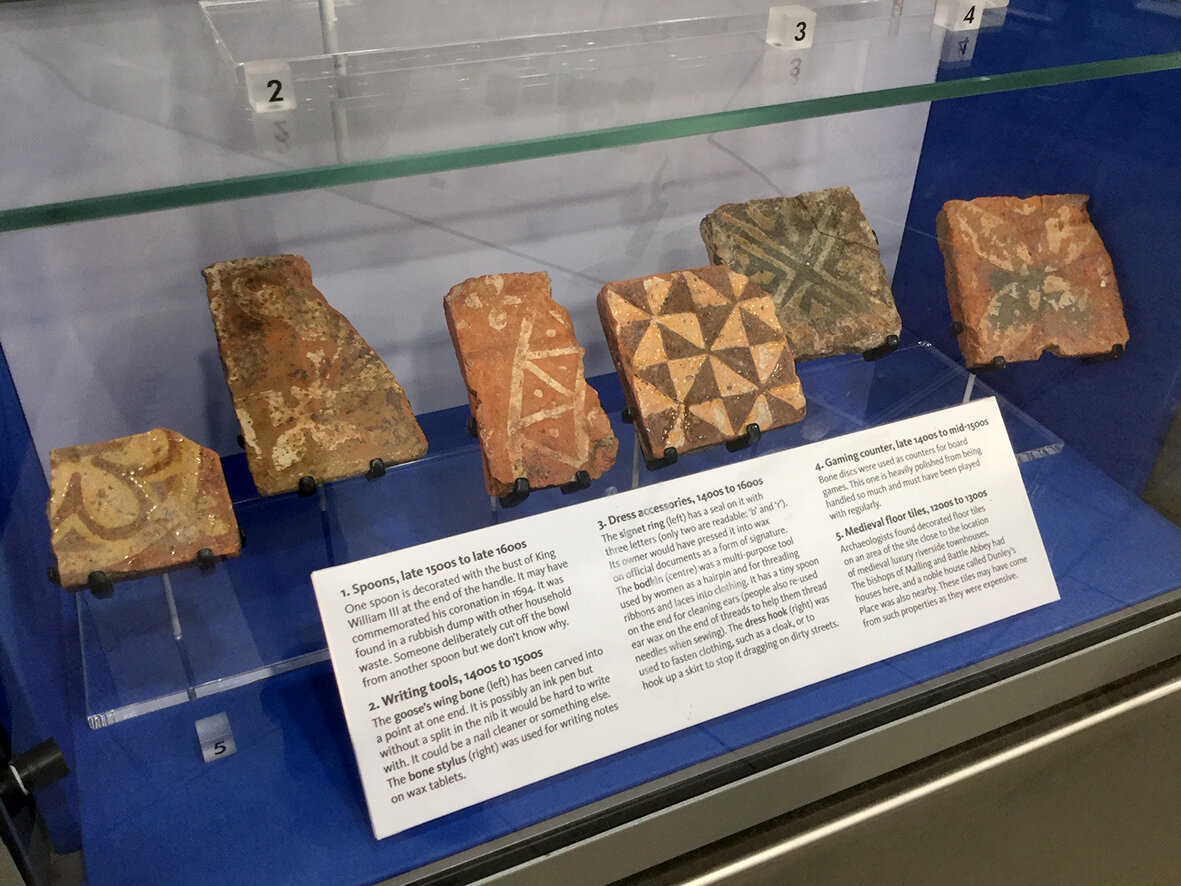
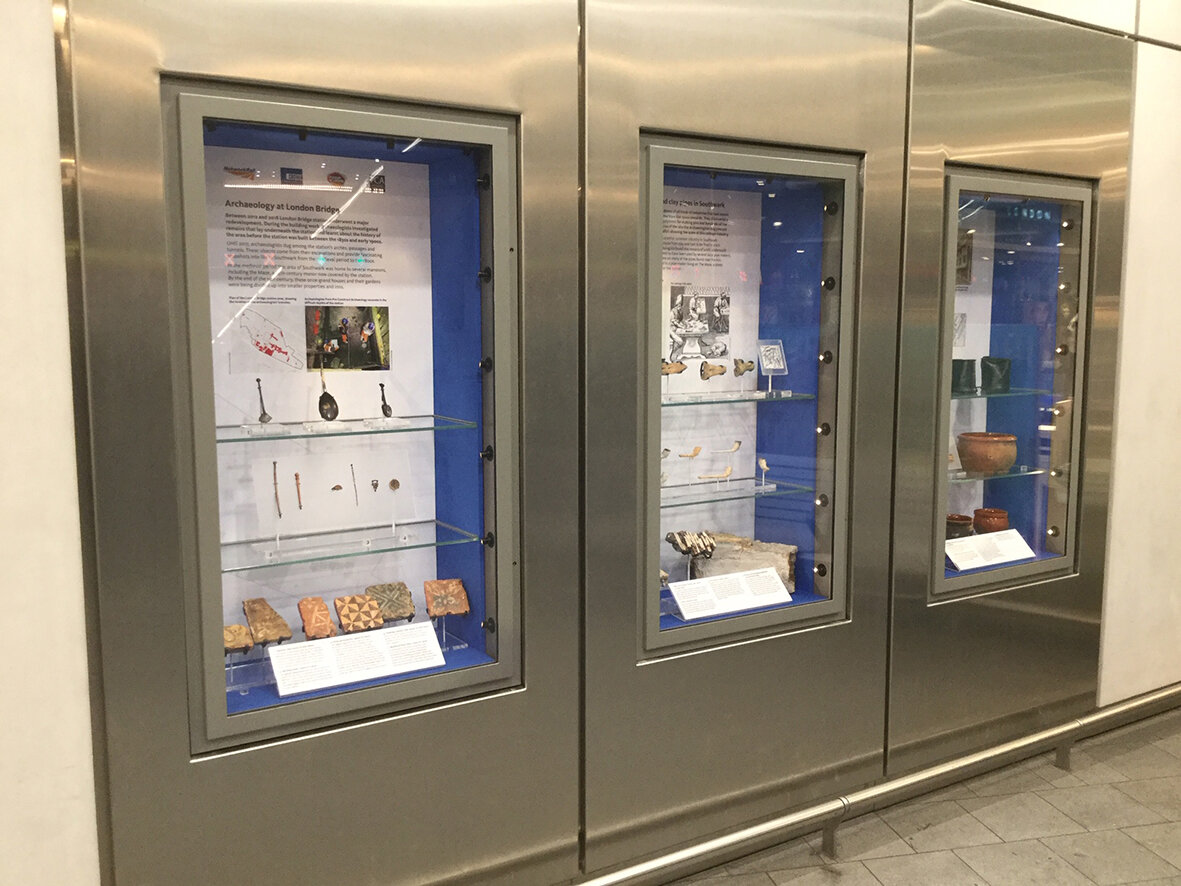
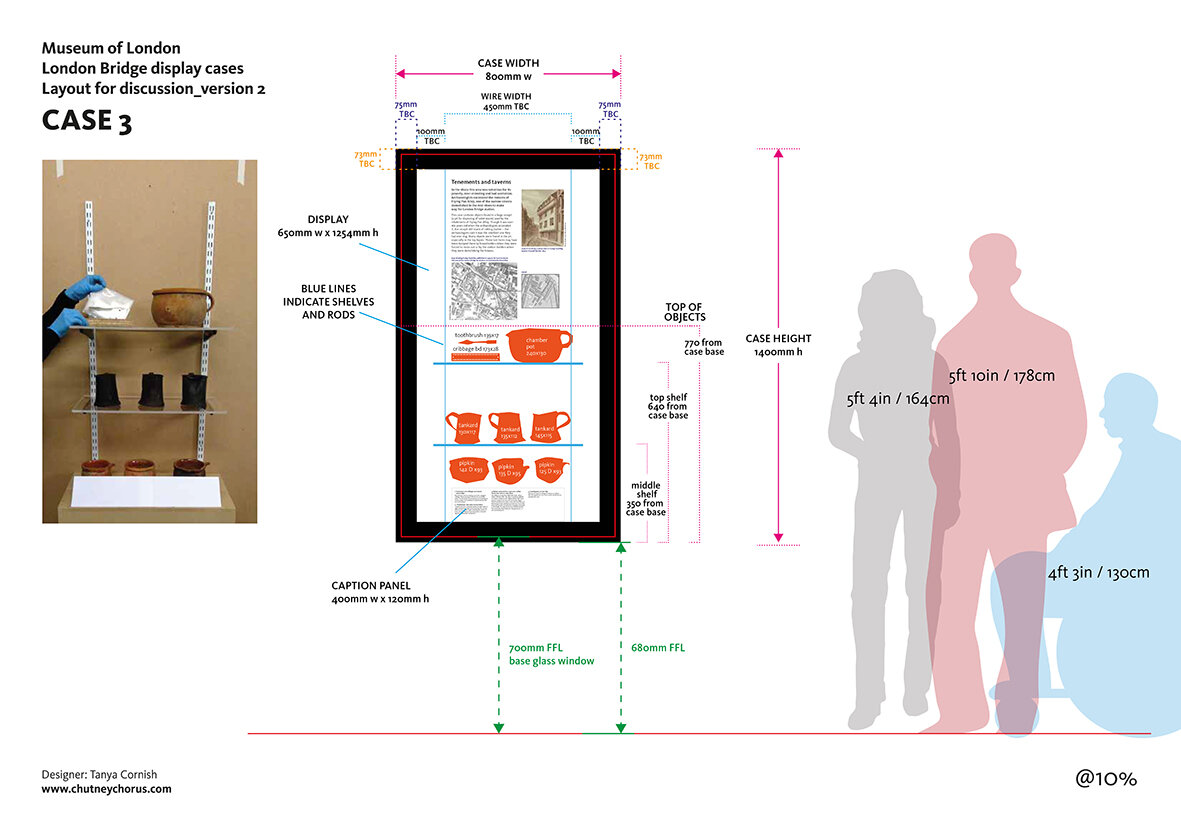
Working with the Museum of London, I designed the 3D layout and 2D panels for the display cases in the expanded London Bridge station. On show are many fascinating objects excavated during the build. If you’re passing through the main concourse, it’s well worth slowing down to take a look.
I find this kind of work so satisfying. Why? Not only do I relish the design process, I get a genuine kick out of working with historical content. For instance, take the caption below about a goose’s wing bone. A few centuries ago, someone living close to the Thames by London Bridge selected a particular bone to carve into a writing instrument which, in its smallness is something to ponder on; but what’s more, is that it survived and is now on display for the thousands passing through the station every day. To me that’s poetry. You have to wonder what it was they intended to write. A few lines to a loved one maybe? Or maybe a letter of complaint? Perhaps a drawing, or a simple list of figures? Which leads me to think about the practicality of such a pen. I’ve found that even without splitting the nib a reed pen works really well, although I’ve only tried bamboo. Which makes me wonder what kind of mark bone would make ... every project creates a wide net of ideas.


(post by Tanya)
This project for Museum of London Docklands is to give children a flavour of life as a docker in Victorian London. I made labels for the costumes, panels for the furniture, retouched sheet music for the Joanna (that’s ‘piano’ if you don’t speak Cockney) and had fun drawing a repeating pattern for the tablecloth. What I enjoyed most of all, however, is the fact that I’m a direct descendant of a Victorian docker! My great-grandfather John Philip Cornish lived from 1862-1948 in Stepney and worked as a casual docker ‘on the stones’. This meant he’d turn up at the docks and stand on a cobbled forecourt amongst hundreds of men and hope he’d be chosen for a day’s work. It was a tough life. Below is a photo of John in his late 60s. Although he’s looking pretty content, note that he’s covering one hand - he lost two and a half fingers to the docks but must have wanted to keep that ‘Mum’.
The family continued to live in Stepney, my grandfather too worked ‘on the stones’, choosing to stay put during the Blitz, where my father remembered being bombed out five times. But perhaps that’s a story for another day …

(post by Tanya)

The Museum of London asked me to help them reinstate a wall of objects in their War, Plague & Fire gallery after using them in a temporary show.
So, what does it take to get this done? Step one is the curator chooses the objects and writes the captions. Then, both the objects and the wall are carefully measured. This info is handed to me, and I start to design the captions and panels while simultaneously creating drawings to scale. Then, between my clients and I, we go through several proofs where we work out the best arrangement, taking into account practical issues such as load-bearing, lighting and legibility as well as making sure the historical narrative is engaging and seamless. Once that is agreed by all, the job is ready to install. I send off caption and panel artwork to the manufacturers who create them to spec e.g. 3mm thick board, printed in two colours. Back inside the museum, my scale drawings are handed to the install team who do the skillful work of mounting the objects so they’re both secure and displayed to maximum effect. Once that’s done the finished captions are installed and the gallery is ready for the public.

3D drawing to scale
(post by Tanya)
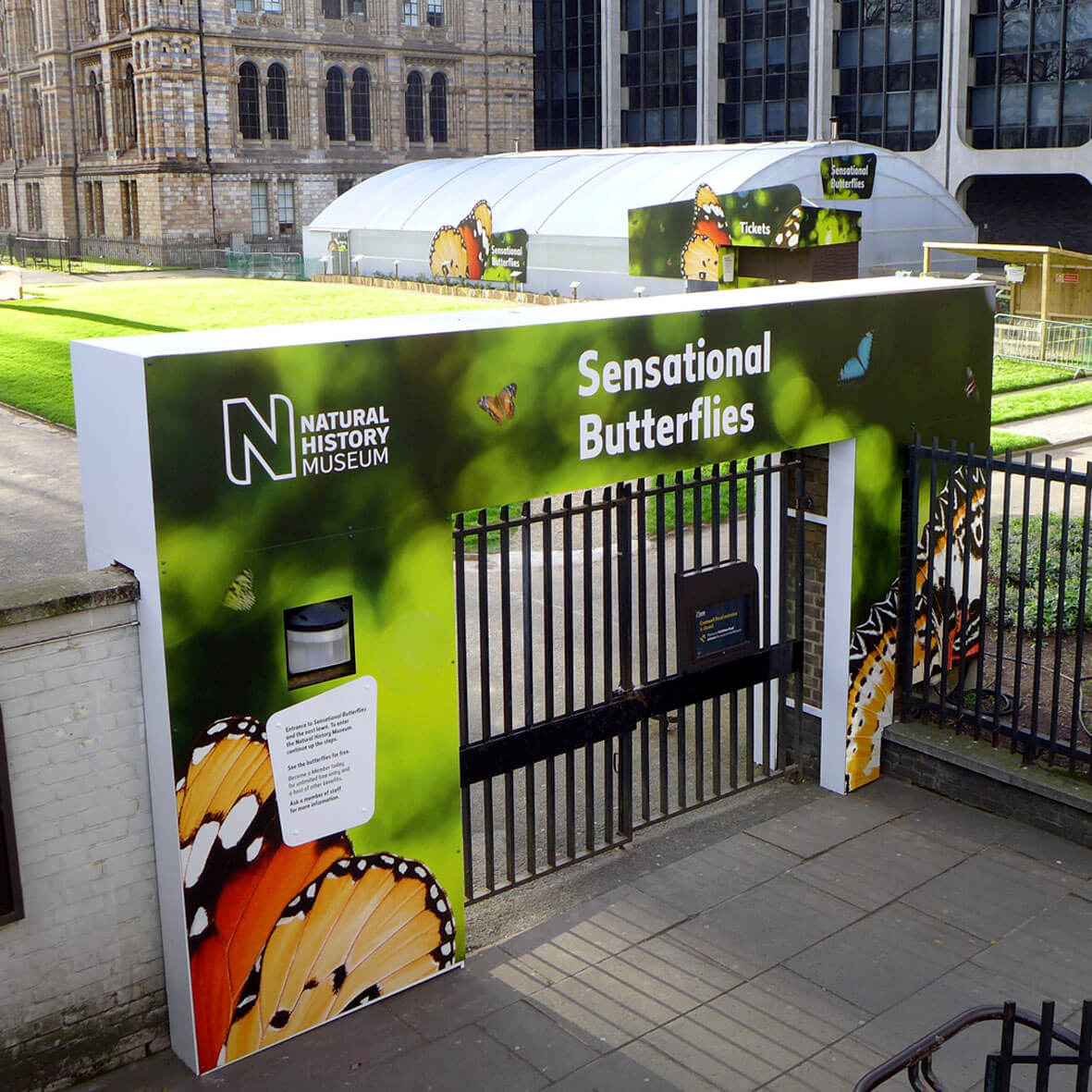
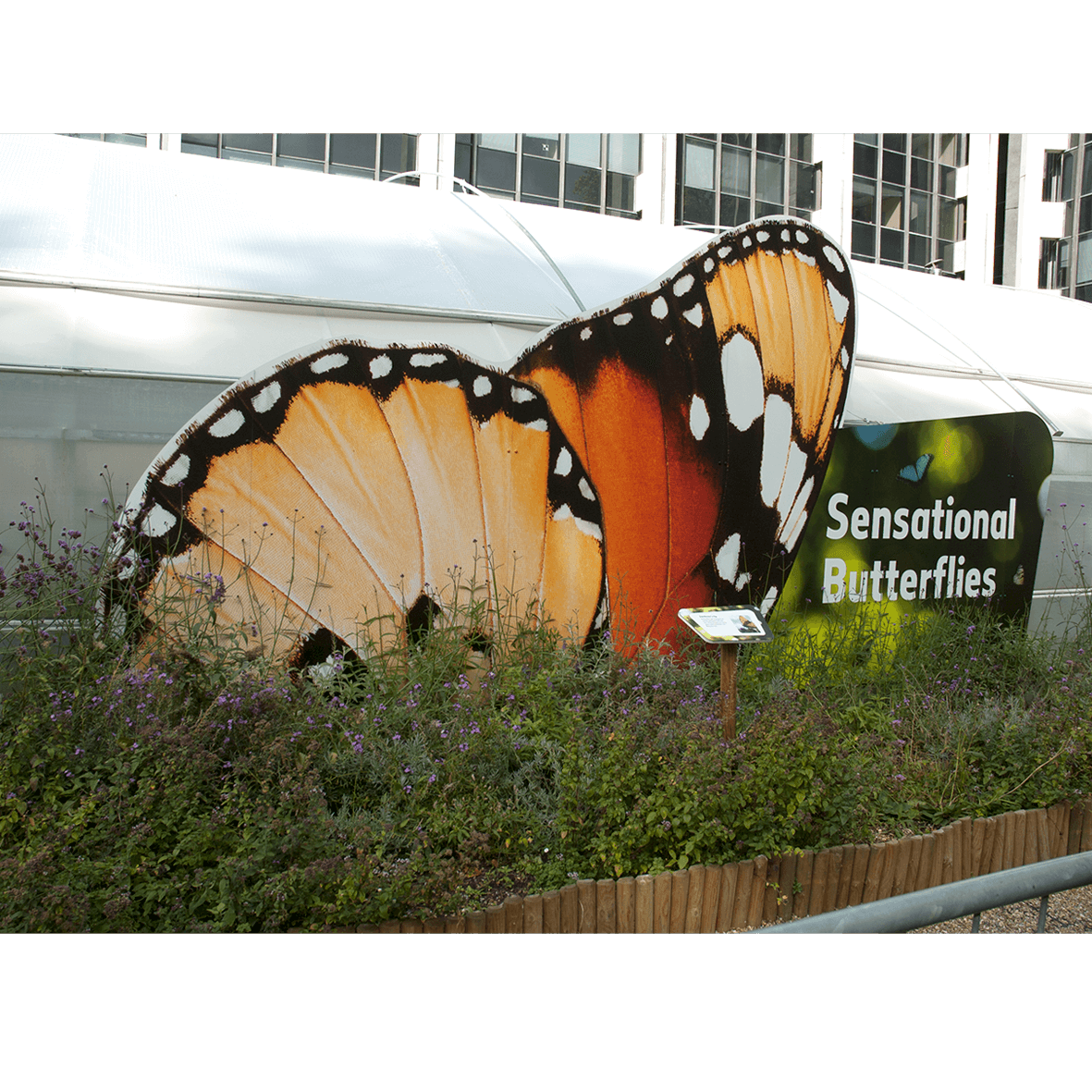
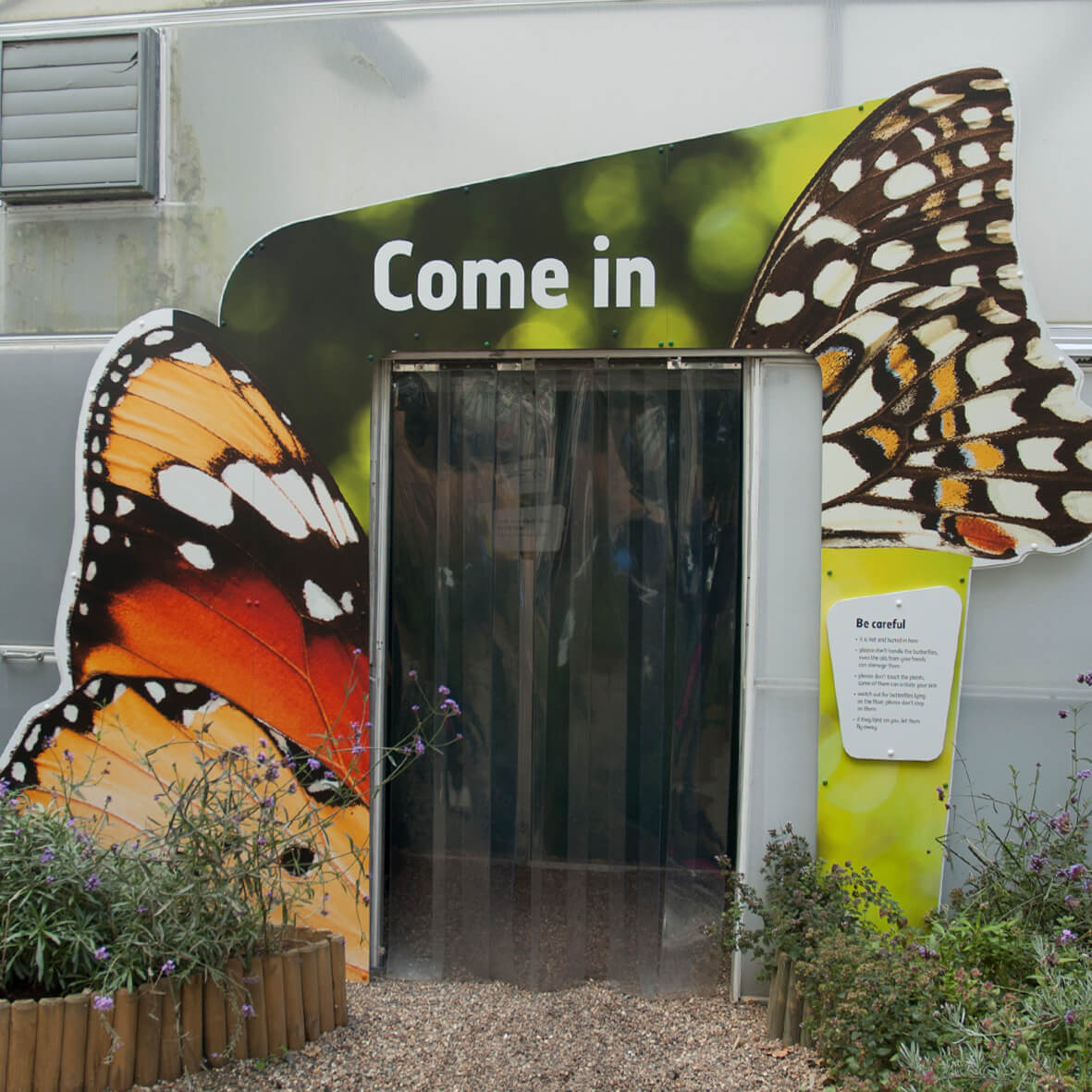

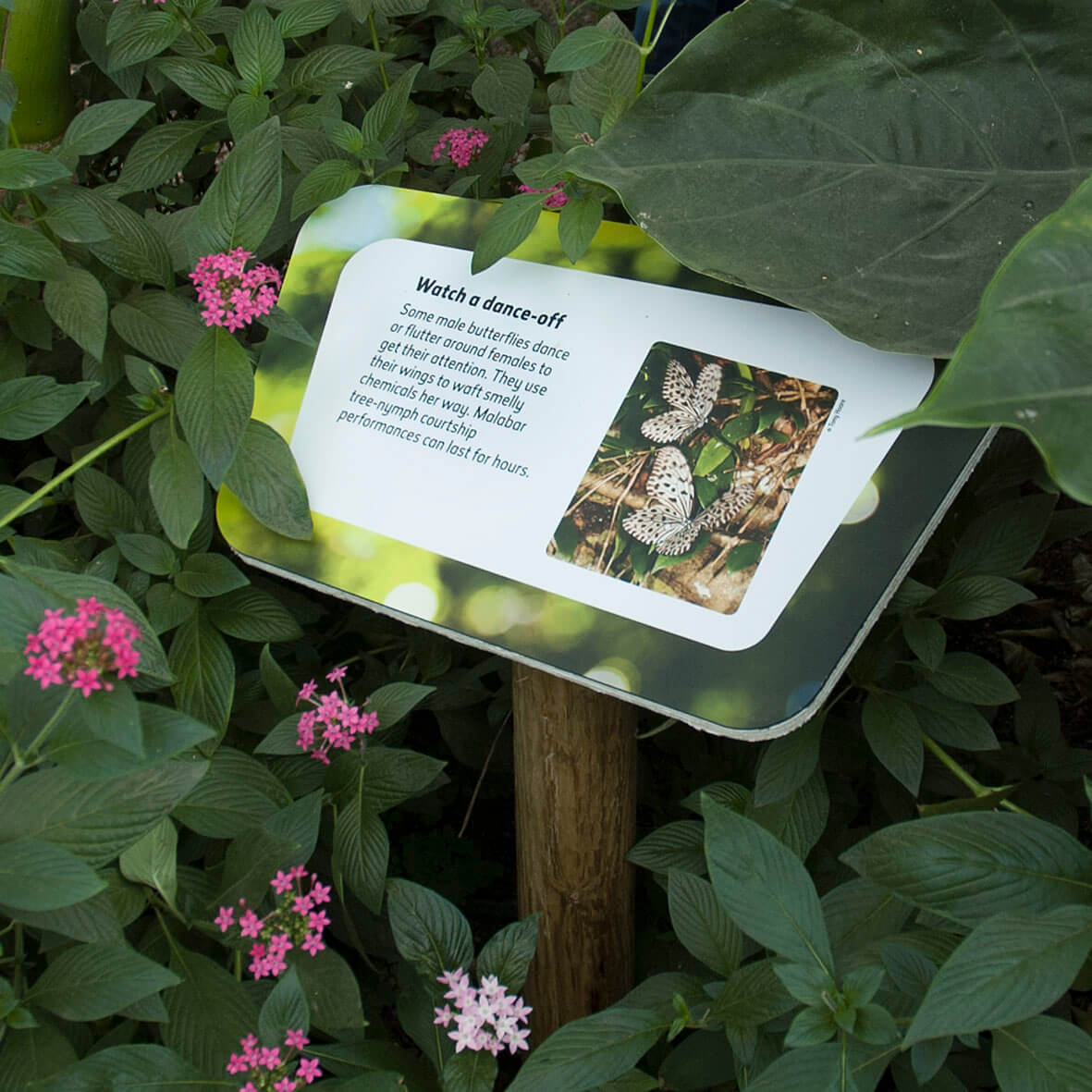
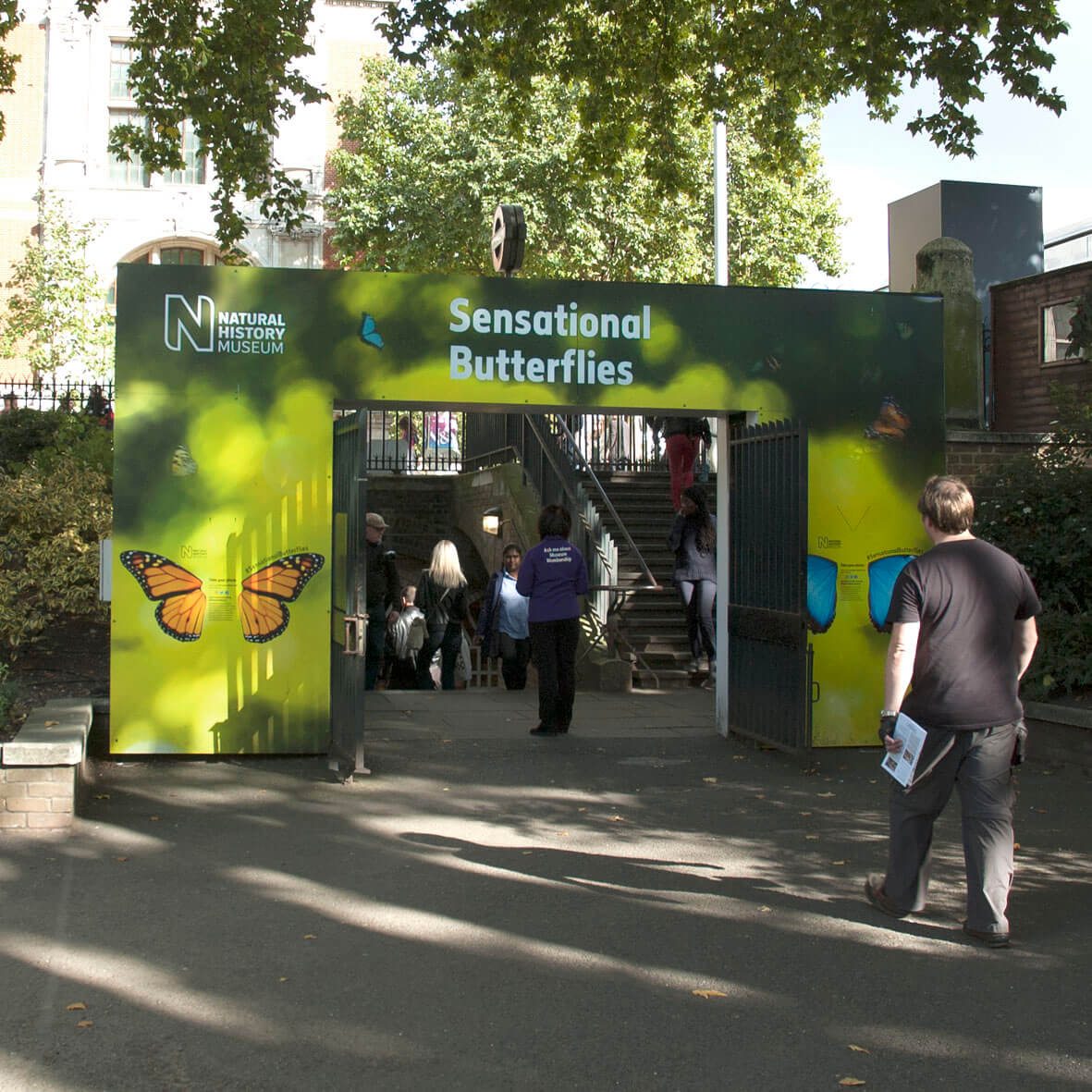
Sensational Butterflies is running for a second year on the front lawn of the Natural History Museum. I designed and artworked the graphics from my little studio here in Crystal Palace. I have to say it was a genuine pleasure using Harry Taylor's photos - such incredible macro photography... an education in itself.
If you can't make it in person, go to their website for a 360 tour with an expert.
Show runs until 16 September
http://www.nhm.ac.uk/visit/exhibitions/sensational-butterflies.html
(post by Tanya)